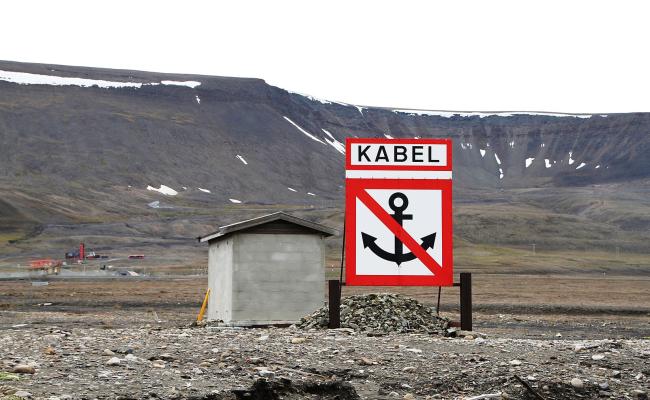New Transport Plan for Longyearbyen in Progress

Longyearbyen in winter light. Today, February 21st, the Longyearbyen Community Council is processing new recommendations for sustainable transport and logistics in Svalbard. (Archive photo from the strategy document Innovation and Business Development on Svalbard)
The Longyearbyen Community Council is processing new recommendations for transport and logistics on Svalbard. Head of Economic Development Lennarth Kvernmo highlights the importance of the work for the population and the business sector; for value creation and liveability on the archipelago.
"In the winter of 2022, the Longyearbyen Local Council decided to map which challenges and needs we have in the transport system on Svalbard, which impacts the population and the business sector here in terms of liveability and value creation."
The quote belongs to Head of Economic Development Lennarth Kvernmo in the Longyearbyen Community Council in a statement to High North News.
"We wanted to reveal which recommendations for improvement measures could be related to transport development," Kvernmo adds.
Commissioned by the Community Council, the Institute of Transport Economics has investigated these matters and presented several recommendations. The institute's project report forms the knowledge base for the recommendations to the head of administration in Longyearbyen – which will be processed in the Community Council this week.
Overarching objectives for the work
Develop sustainable transport and logistics systems and services for Longyearbyen, which are experienced as sustainable, rational, and efficient by customers and suppliers in the transport systems beyond Svalbard policy frameworks.
Source: Longyearbyen Community Council
Local measures
In a document from the Community Council, the head of administration in Longyearbyen requests that the project's main object be continued. Furthermore, he points to a number of recommendations, including the following local measures:
- Electrification of the road traffic and low-emission fuel for road traffic
- Partial mobility and public transport
- Shipping
- Tourism (facilitating a sustainable tourism strategy)
The head of administration also refers to national measures, which include the development of value chains, low emissions in shipping and aviation, cooperation, and electric aviation.
"The local measures largely deal with land-based transport within our area of management, including the Longyearbyen harbor front, electrification of road traffic, and public transport. Within shipping, the measures could be related to us starting projects which contribute to sustainable infrastructure, such as electric charging stations for boats or hydrogen filling stations for local shipping," explains Kvernmo and adds:
"The knowledge base also highlights that one should facilitate sustainable tourism. Currently, the largest industry in Svalbard is tourism, and they have a great number of visitors. Collaboration with the tourism industry to look at measures to make it more sustainable is considered an area of priority that the head of administration recommends.

From Longyearbyen. (Photo: Lennarth Kvernmo).
Climate emissions, liveability, and business development
Kvernmo specifies that there are some Svalbard policy frameworks that also must be taken into account regarding transport development. A new Svalbard white paper is currently underway, which will provide guidelines for the archipelago policy, which might have a lot to say for further development.
"This complicates the work further. At the same time, there are several measures in the report which are possible to work with, and which can be solved quite quickly. An example is land-based transport. We know that many of the customers, the inhabitants and the business sector, are concerned with electrified charging stations for electric cars. Other such measures are within public transport," he explains.
"Within sea and land transport, the focus is on reducing emissions. At the same time, we must have both continuity and a price point which makes it possible to support business development and livability and create a desire to live in Svalbard," he specifies.
It is important that we address national authorities on what we think and believe to be the needs of Longyearbyen.
National measures
As mentioned, the head of administration is also presenting several national measures. However, many of the suggestions are out of the Community Council's hands, and control lies with national authorities, says the head of economic development.
"At the same time, political pressure is an overarching objective regarding transport development, for example, in connection with the development of the Svalbard white paper and the National Transport Plan (NTP). It is important that we address national authorities on what we think and believe to be the needs of Longyearbyen."
"The Longyearbyen Community Council is set to run a democracy for 2600 inhabitants and 350 businesses, and these are concerned with a well-functioning transport system," concludes Kvernmo.





